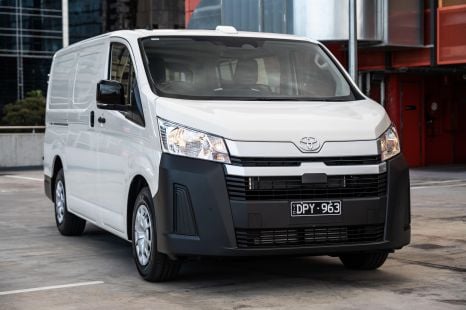

Max Davies
2026 Toyota HiAce review
3 Hours Ago
The MX-30 is a distinctive, generally pleasant crossover, but Mazda is setting buyers up for disappointment with the M Hybrid name.
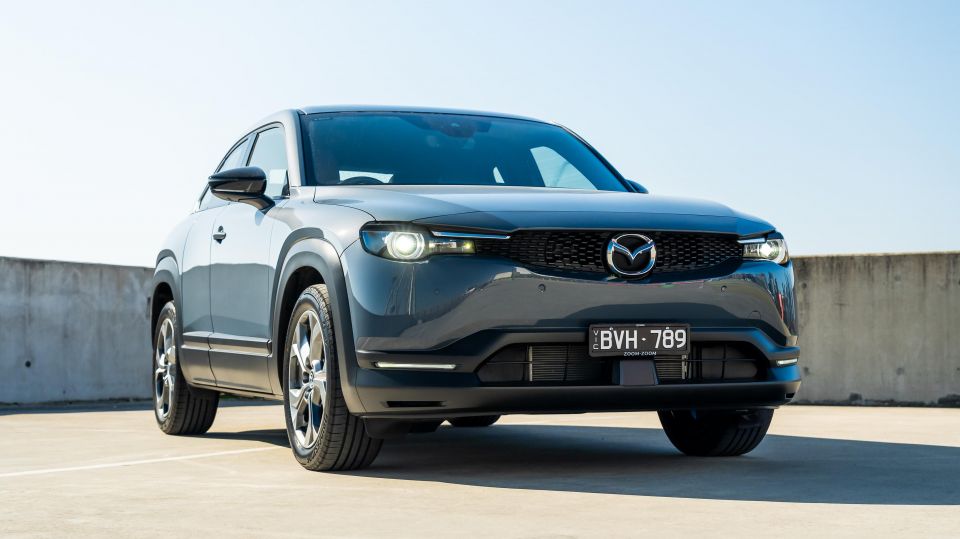
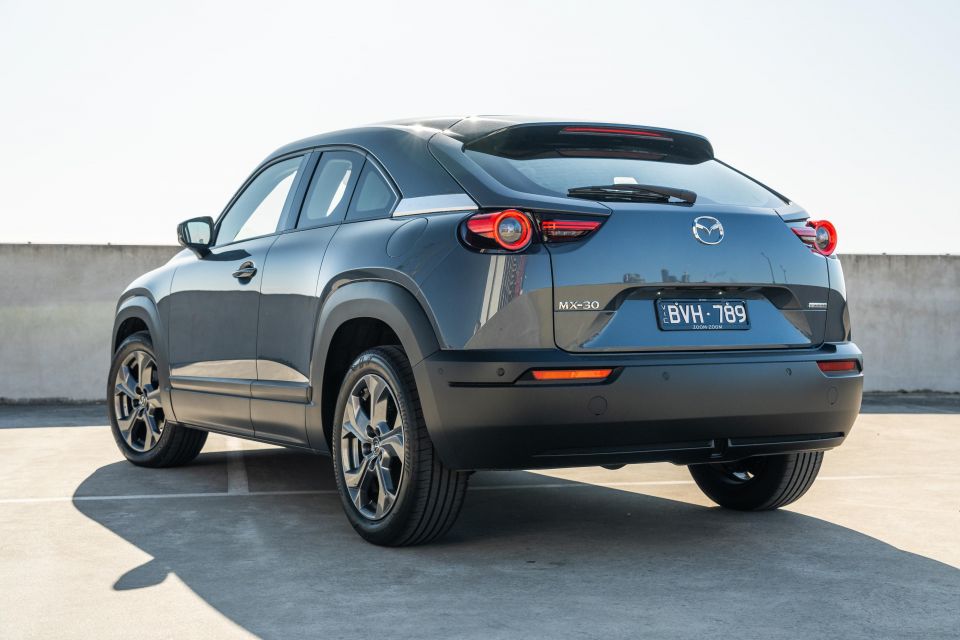

News Editor

News Editor


News Editor

News Editor
Where expert car reviews meet expert car buying – CarExpert gives you trusted advice, personalised service and real savings on your next new car.
The Mazda MX-30 has proved perplexing since it was revealed at the 2019 Tokyo motor show.
It was Mazda’s first electric vehicle, but a few months later the company revealed a version of it with a petrol engine for the Japanese market.
Said model was subsequently confirmed for Australia, wearing M Hybrid badging… despite the fact it’s not a hybrid but rather a mild-hybrid, and a particularly mild one at that.

So, what was supposed to be Mazda’s unique electric model has become yet another SUV in Mazda’s range, priced up against the more practical and mechanically-related CX-30 that boasts normal-sized rear doors.
It offers an electric version with disappointing range, and a so-called hybrid that can’t match ‘proper’ Toyota hybrids in fuel economy.
In a way, it’s conceptually similar to the defunct Hyundai Veloster, taking a more practical model and wrapping it in distinctive styling sans conventional rear doors, but unfortunately there’s no spunky turbocharged engine in the Mazda.
On the surface, then, it seems like a pretty compelling endorsement for just buying a CX-30 instead, unless you really love the MX-30’s looks. But let’s look closer to see what the MX-30 offers.
We tested the MX-30 G20e Astina, the flagship of the mild-hybrid range. It’s priced from $41,190 before on-road costs, or $7000 more than the base G20e Evolve.
Jet Black mica, Arctic White and Ceramic metallic are no-cost options, while Machine Grey metallic and our tester’s rather drab Polymetal Grey metallic are an extra $595. Mazda also offers a trio of three-tone finishes, costing between $995 and $1590 depending on the main shade.
It’s a bit disappointing that the MX-30 with its funky styling is offered only in grey, black, white and a single red. If any Mazda could pull off a bright yellow or aqua, it’s this one.
The G20e Astina’s price is a whopping $24,300 less than the all-electric E35 Astina.

While it compares favourably with the overpriced electric model, it doesn’t stack up as well against the similarly sized CX-30.
We understand coupes and coupe SUVs typically command a premium over their more practical counterparts – there’s a premium for style – and on the surface, an extra $1000 over a CX-30 G20 Astina doesn’t sound unreasonable. Indeed, that’s probably one of the smallest premiums for a sleeker body style.
However, you can get a more powerful CX-30 G25 Astina for only $1500 more. If you’re already going to be spending more…
It’s worth noting Mazda only offers this powertrain in the CX-30 in less fulsomely equipped G20e Evolve guise, so there’s not a direct equivalent in that range. But only 0.3L/100km on the combined cycle separates G20, G20e and G25 versions of the front-wheel drive CX-30, which makes this so-called ‘M Hybrid’ powertrain look decidedly underwhelming.
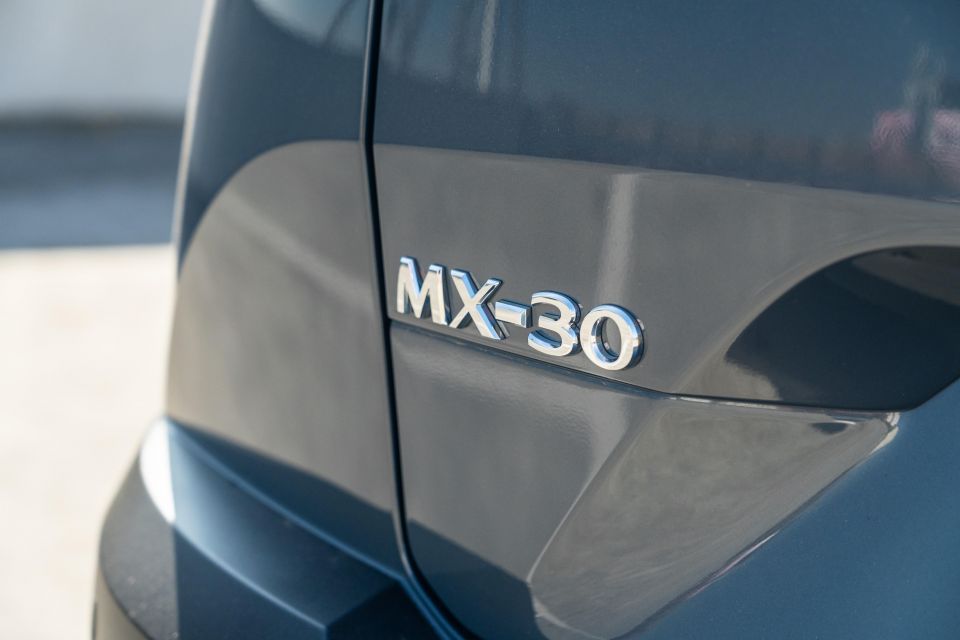
The MX-30 has a raft of rivals, though none offer rear-hinged ‘freestyle’ doors. Among the more style- or efficiency-focused rivals include:
Prices exclude on-road costs unless specified
You could arguably count the likes of the Audi Q2 35 TFSI ($45,200) and Lexus UX200 Luxury ($44,445) as rivals.
Of course, if you’re looking for a stylish Mazda with occasional-use rear seats, there’s the Mazda 3 hatchback.Even in G25 Astina guise, with an almost identical combined fuel economy claim, it undercuts the MX-30 at $39,690 before on-roads. You need to ask yourself if you really need the slightly higher ride height of the MX-30.
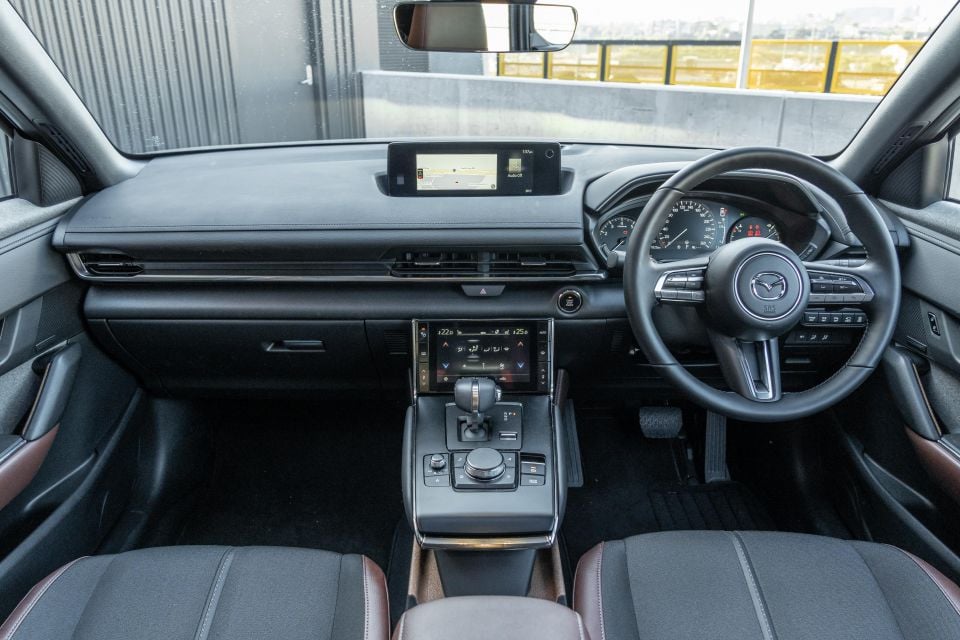
Buy your new car without the stress. It's fast, simple and completely free.

Great service from Travis and team, second time I have used this business would not hesitate to recommend them to anyone
Craig C.
Purchased a Ford Ranger in Sunshine Coast, QLD
CarExpert helped Craig save thousands on his Ford Ranger, now let us save you on your next new car.
Find a dealThe MX-30’s cabin differs the most from its stablemates in its material choices and the incorporation of a second screen below the infotainment system in place of conventional climate controls.
While the main infotainment display lacks touch functionality – frustrating if you’re using smartphone mirroring – the climate control screen located further down is controlled by touch. Thoughtfully, it also includes a collection of buttons that also allow you to adjust numerous climate functions.
The presence of a second screen for climate controls is something seen in models from Audi and Land Rover, though it looks a bit aftermarket in the Mazda.
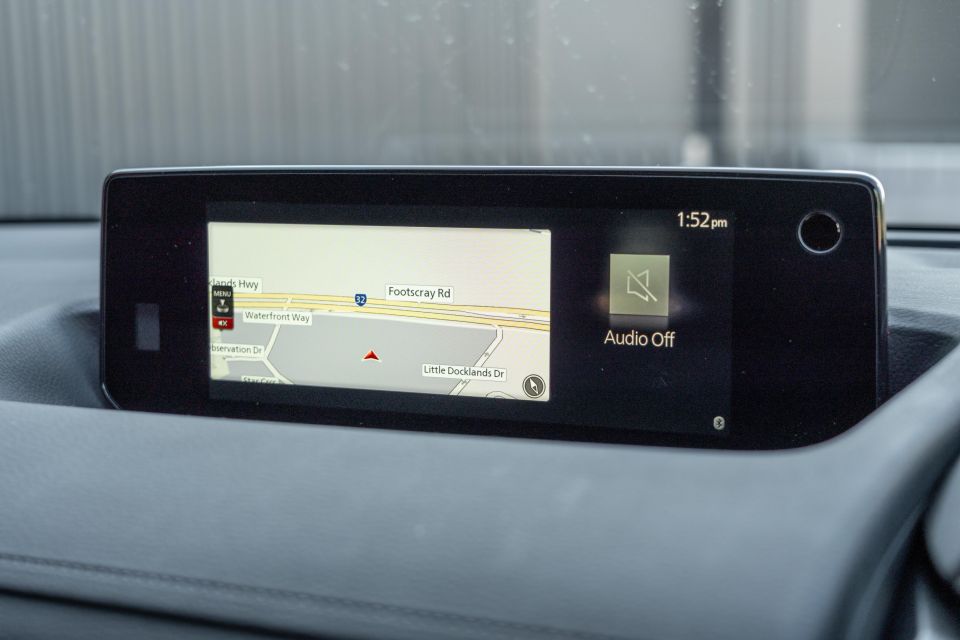

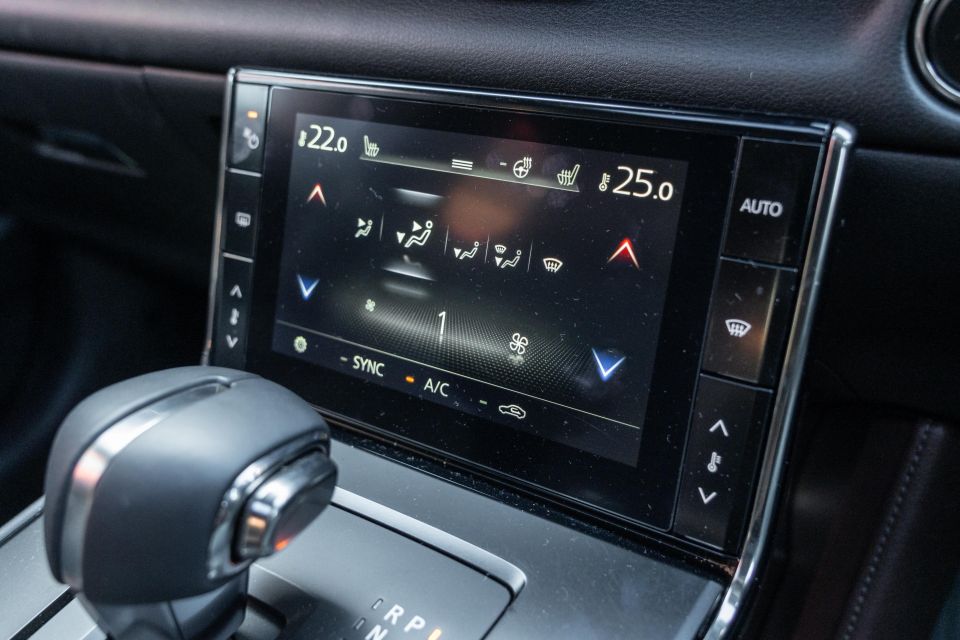
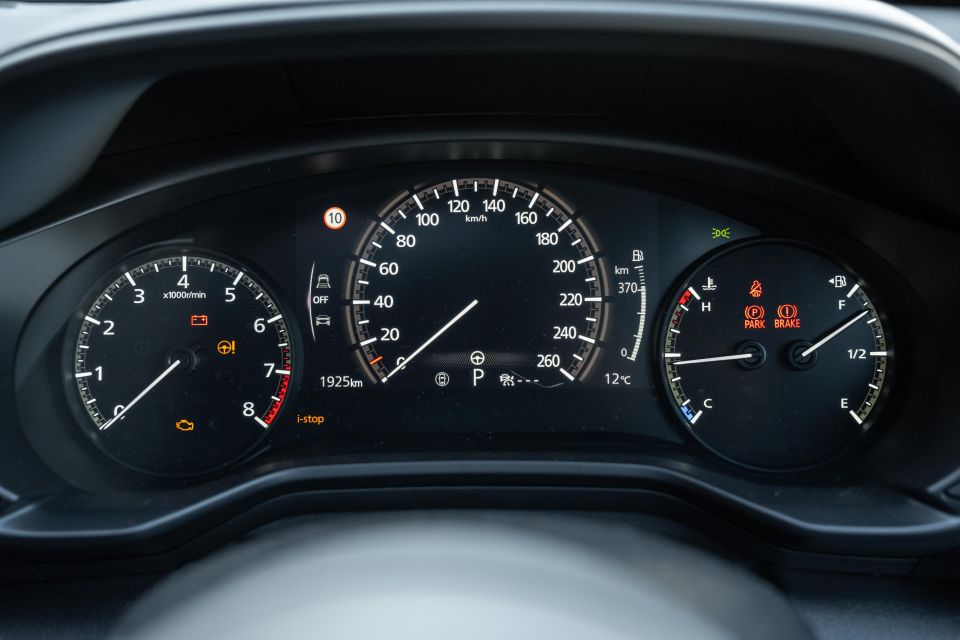
Fortunately, it works well, while the main infotainment screen – lack of touch input aside – features slick graphics and proves easily navigable with the tactile rotary dial. Smartphone mirroring is full-screen, too.
The quality of the cameras, including the 360-degree display, is top-notch.
The instrument cluster, in Mazda style, blends analogue and digital elements together in an attractive and intuitive way. It’s not as flashy as the full digital clusters found in some rivals, but it looks like it’ll age well.
Mazda has incorporated numerous eco-friendly trim items, like the sustainably-sourced cork trim found on the centre console and the fabric-like door trim on the doors made from repurposed PET bottles.
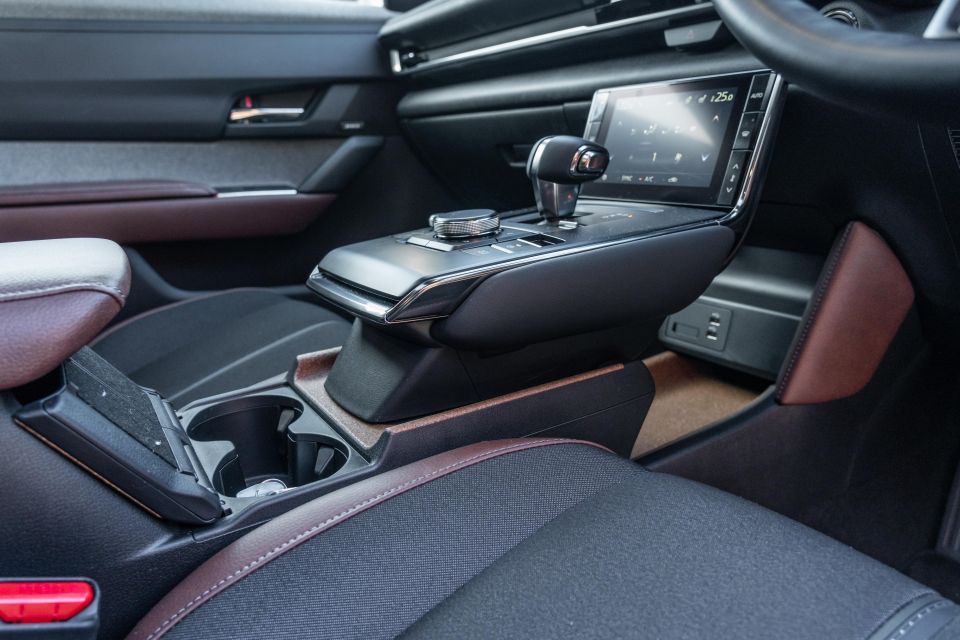
The company appears to have been going for a BMW i3-like vibe for the cabin, though the cabin isn’t quite as clever. Take the cascading centre stack, for example. It allows for a semi-secluded shelf area closer to the floor, which can fit phones and small purses.
This area isn’t illuminated, though, and plugging in a USB cable is awkward due to the low placement of the USB-A outlets. It also doesn’t make the front of the cabin feel any more spacious.
The fabric-like trim on the doors certainly doesn’t feel like ocean trash, and looks attractive to boot if somewhat reminiscent of wall coverings I’ve seen in some offices. The cork trim is less endearing as, while it adds some nice contrast, I’m sceptical as to how it’ll age. And though the door trims don’t look like old bottles, the console trim sure looks like old corks.
The front cupholders also feature cork covers, which can be folded up to enclose the decently sized centre console bin.
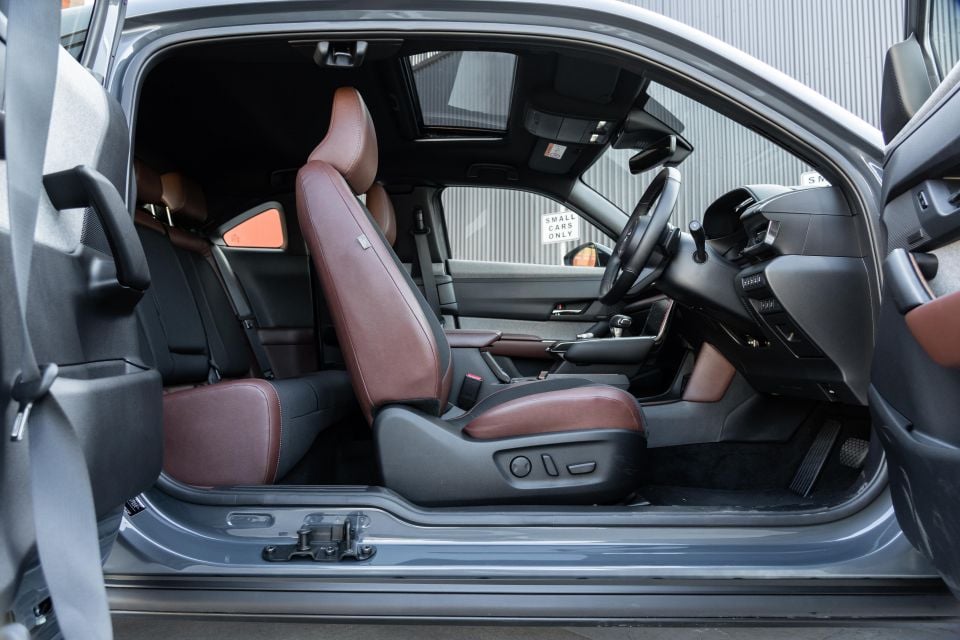
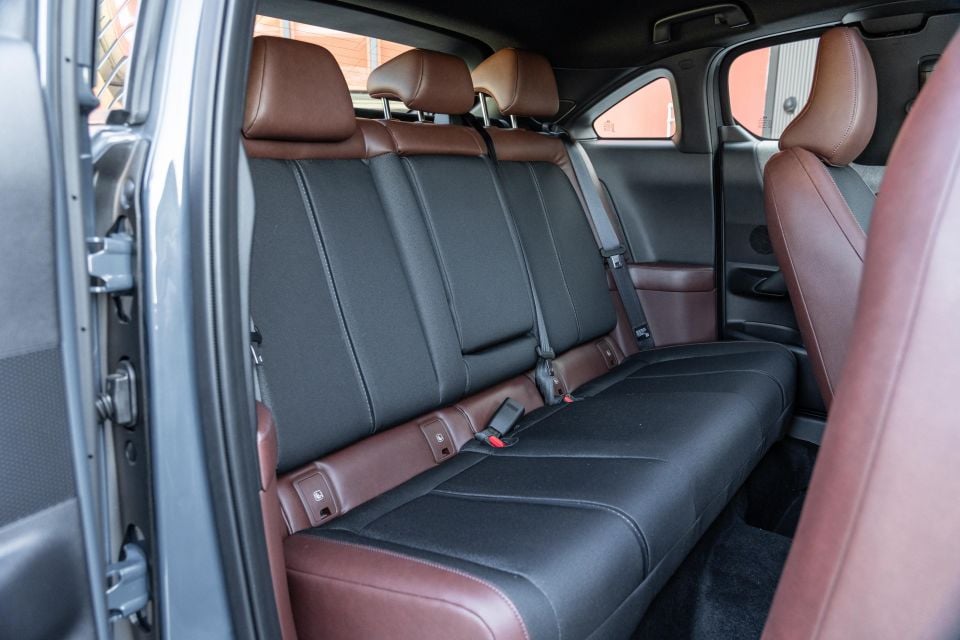
Sustainable trim aside, material quality is a mixture of good and not-so-good.
Hard, scratchy plastics can be found on the front of the dashboard and on the instrument cluster cowl, while the dash top is finished in soft-touch plastic and there’s nice padded trim on the sides of the centre console.
The seats proved comfortable, and there are brown highlights that add a pop of colour to the cabin. The steering wheel is also tactile, with easy-to-use switchgear. It features a heating function and, though there’s only one level, it’s a nice, even application of heat that proves comfortable to leave on.
To get into the back seat, you need to open the front doors first. While the rear doors aren’t as large as conventional doors, the overall size of the opening makes it relatively easy to access the back seat. Kids should have no problem.


Once back there, there’s more than enough room for children. I drove two adults around, both of whom measured around 180cm tall, and there were no complaints.
One passenger observed their hair brushed the roof and knee room wasn’t exceptional, but seat comfort overall was good. A centre-seat occupant will find room cut into by the driveline hump, however.
There are no amenities back here like rear air vents or USB outlets, though you’ll find the standard complement of child seat anchor points: ISOFIX for the two outboard seats, and top-tether for all three.
Boot space is 311L according to VDA standards with the rear seats upright, essentially the same as a CX-30. There’s a space-saver spare under the boot floor.
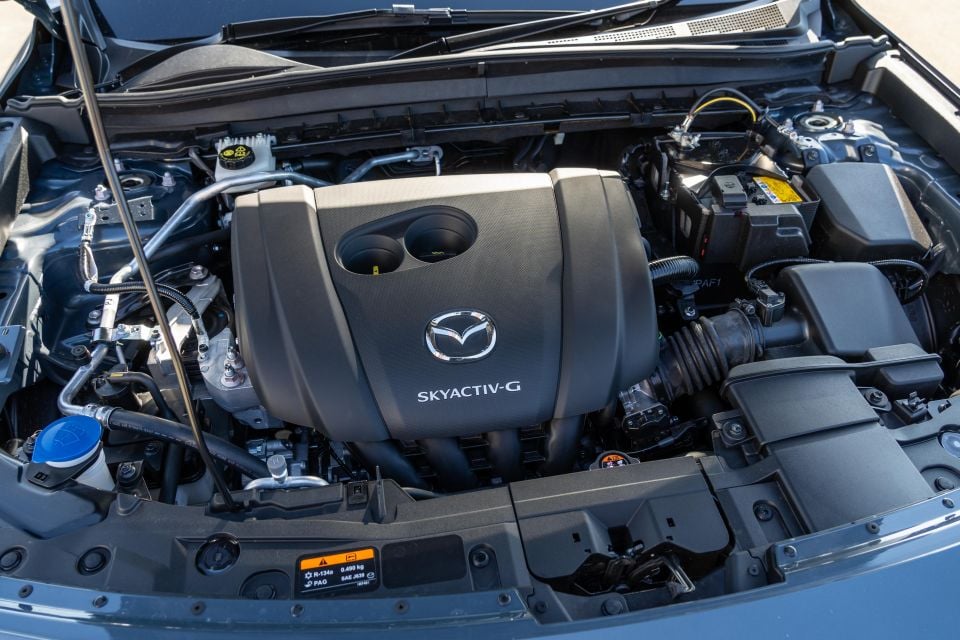
The MX-30 G20e Astina is powered by a 2.0-litre naturally-aspirated four-cylinder petrol engine with a 24V mild-hybrid system.
It produces 114kW of power and 200Nm of torque, and drive is sent to the front wheels through a six-speed automatic transmission. These outputs are the same as in both G20 and G20e versions of the CX-30.
The MX-30 uses a claimed 6.4L/100km on the ADR combined cycle according to ADR testing, consuming 91 RON unleaded fuel.
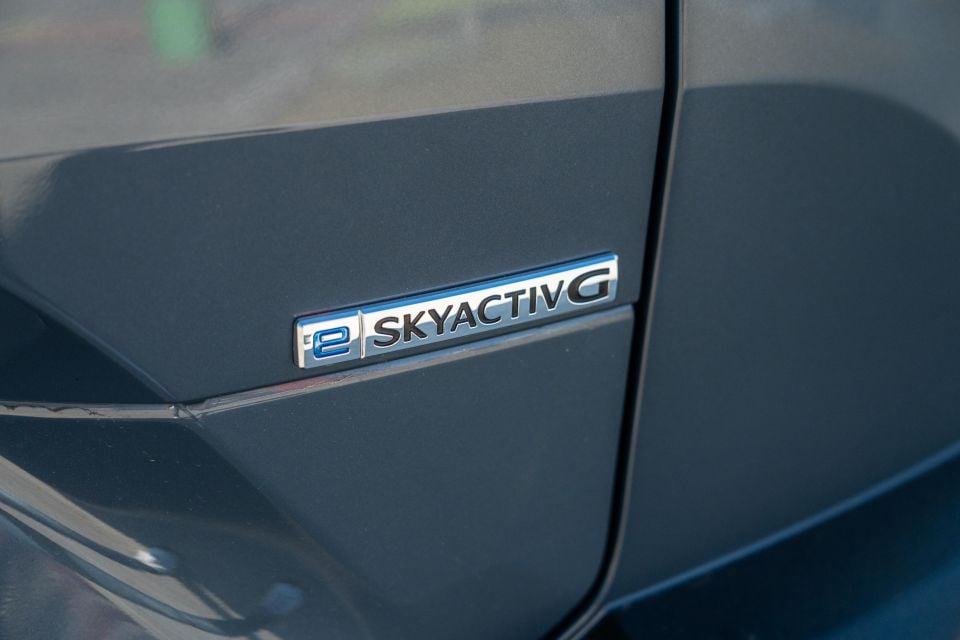
Over a loop consisting of a fairly even mix of highway, inner-city and suburban driving, we averaged 7.5L/100km.
Over the course of a week, admittedly in almost entirely urban driving, we averaged 10.2L/100km. It was impossible to bring that figure below 10L/100km, despite an official urban claim of 7.6L/100km.
For reference, the Honda HR-V e:HEV produces 96kW and 253Nm and uses 4.3L/100km on the combined cycle, while a Toyota C-HR Hybrid produces 90kW and also sips just 4.3L/100km.
The MX-30 does best the Subaru XV Hybrid’s 6.5L/100km claim while offering fractionally more power and torque, though the Subaru features all-wheel drive.
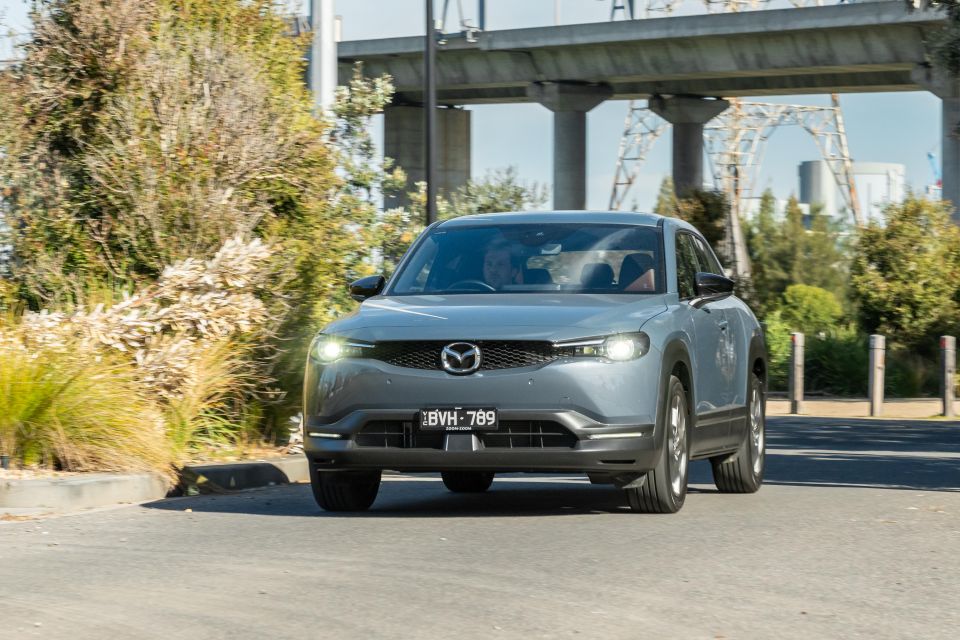
The combination of the MX- prefix, those RX-8 doors, and sportier looks suggest the MX-30 could offer a more engaging driving experience compared to the CX-30. That’s not the case, and the MX-30 is let down by a so-so engine and a dozy transmission.
The MX-30’s outputs aren’t poor for the class, nor are they class-leading, and the engine simply doesn’t feel as gutsy and flexible as the turbocharged mills found in rivals like the Volkswagen T-Roc.
There’s a pronounced lack of low-end torque here, which means you have to rev the MX-30 to get the most out of it. We’ve previously recorded a circa-10 second 0-100km/h time, so suffice it to say the MX-30 M Hybrid won’t push you back in your seat.
The six-speed automatic transmission needs recalibrating. Shifts were more pronounced than we’re used to in Mazda products and it seemed to be caught out by sudden acceleration.
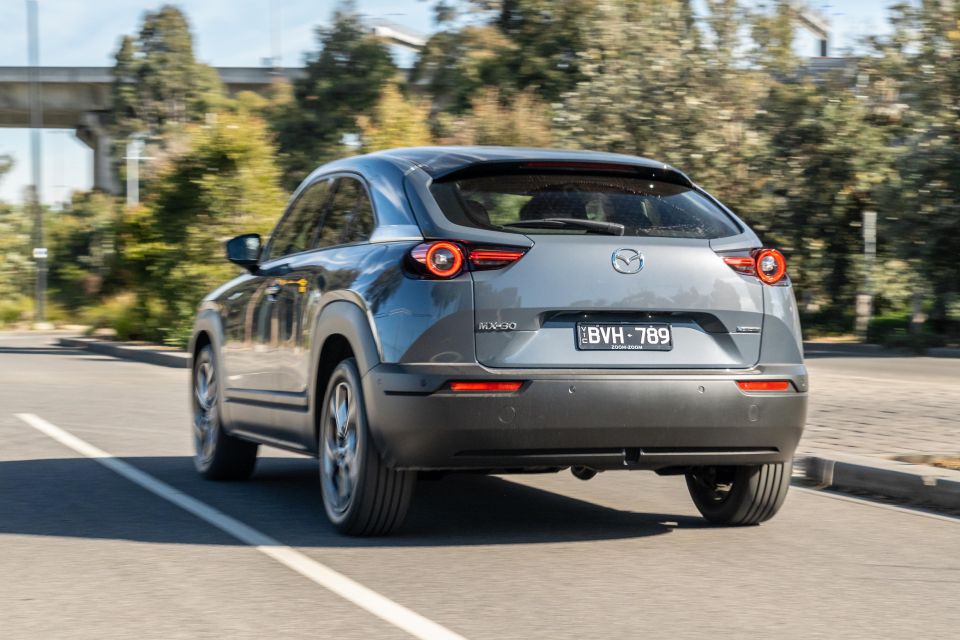
The soundtrack isn’t inspiring either, with the MX-30 sounding a bit buzzy on startup and then, in operation, characterised by a series of muffled moans. At least the cabin is well insulated, proving quiet even at highway speeds.
Ride quality is generally acceptable, but certain items on the road like expansion joints and tram tracks aren’t absorbed well and the MX-30 tends to clunk over them.
It’s decently tied down, but there’s still a bit of rebound when you go over undulations. As a consequence, it doesn’t feel all that sporty – even if the occasionally harsh impacts that disturb the car appear to be the hallmark of a sporty vehicle.
Steering is better, with a good balance between road feel and ease of use. Handling is balanced and neutral, though the MX-30 isn’t as engaging as the likes of the Ford Puma or VW T-Roc – SUVs we’d genuinely call fun-to-drive.
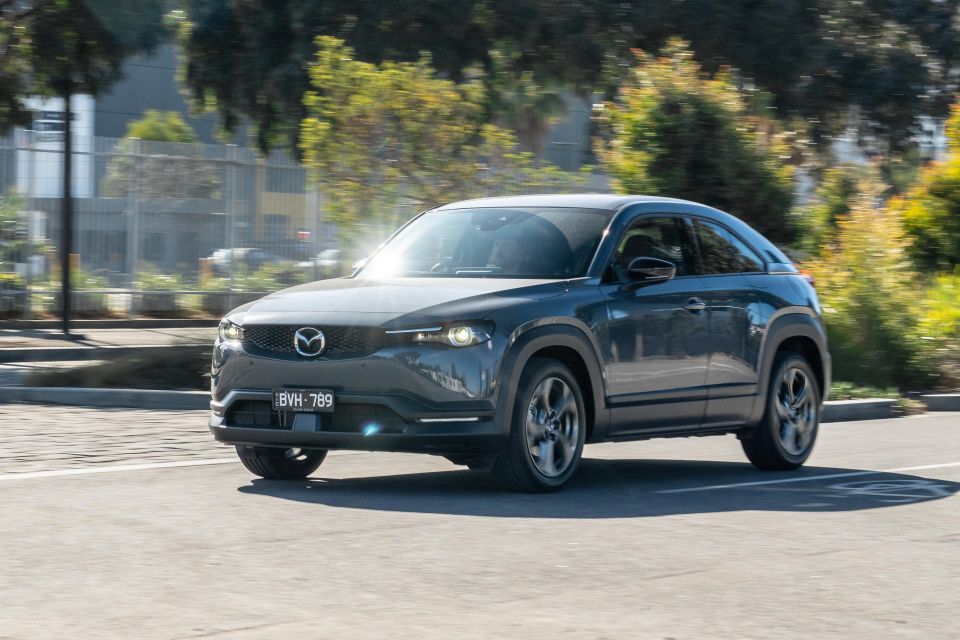
Where expert car reviews meet expert car buying – CarExpert gives you trusted advice, personalised service and real savings on your next new car.
Mazda says the MX-30’s mild-hybrid system helps ensure a smooth automatic stop/start system. It certainly is smooth, and it doesn’t perform as forcefully as the stop/start systems in Volkswagen Group products – good news if you’re one of the many punters that loathe this feature.
The blind-spot monitoring is much appreciated as the MX-30 suffers from enormous blind spots. The system works well, as do the rest of Mazda’s active safety and driver assist aids.
Of particular note is the Cruising and Traffic Support, which keeps the car safely away from the vehicle in front and neatly centred in your lane. It works as adeptly as the likes of Hyundai and Kia’s Lane Following Assist, yet feels more natural in its operation.
Finally, Mazda’s adaptive LED headlights work exceptionally well.
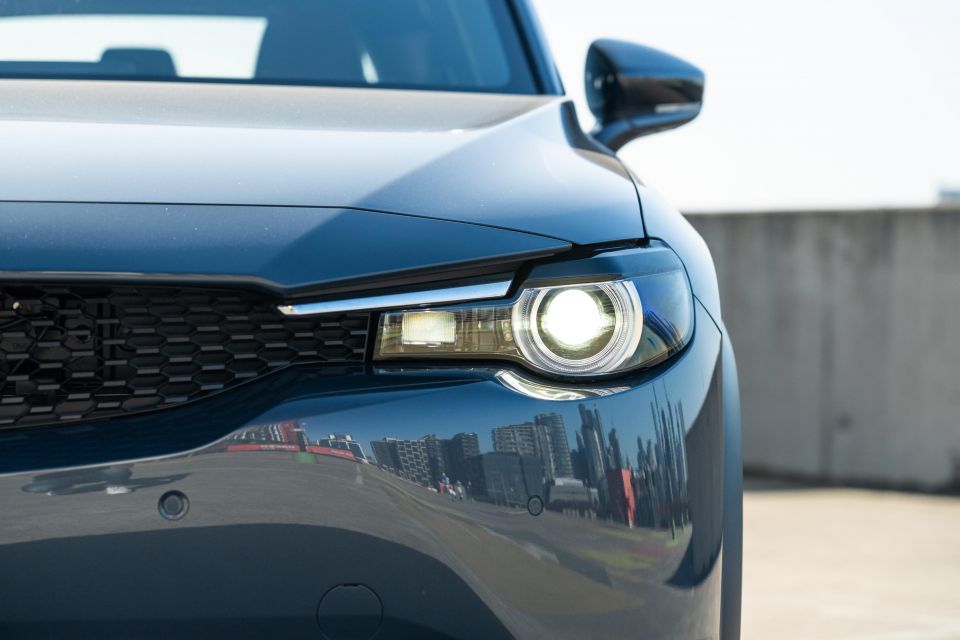

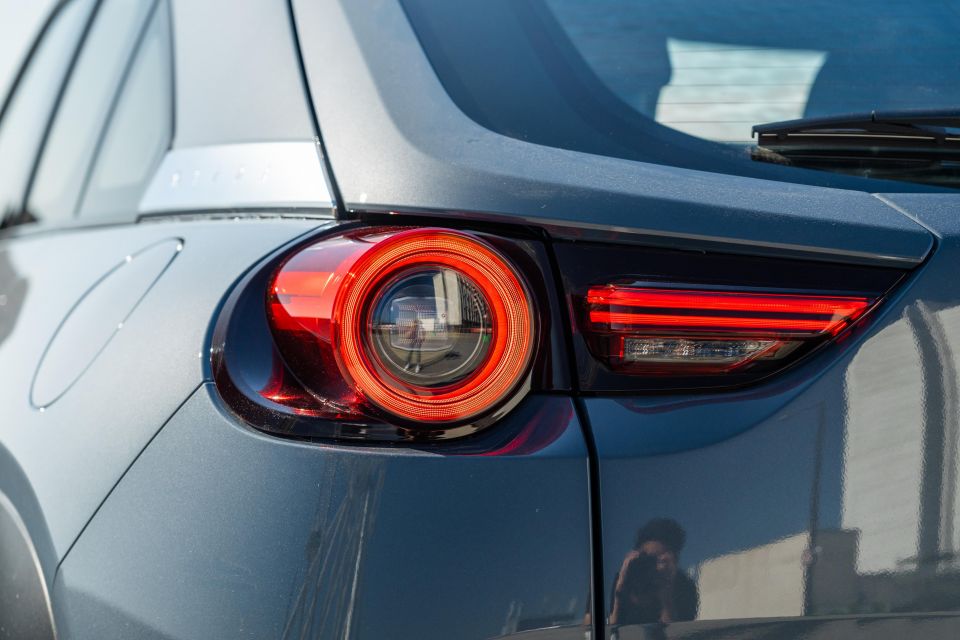

MX-30 G20e Astina highlights:

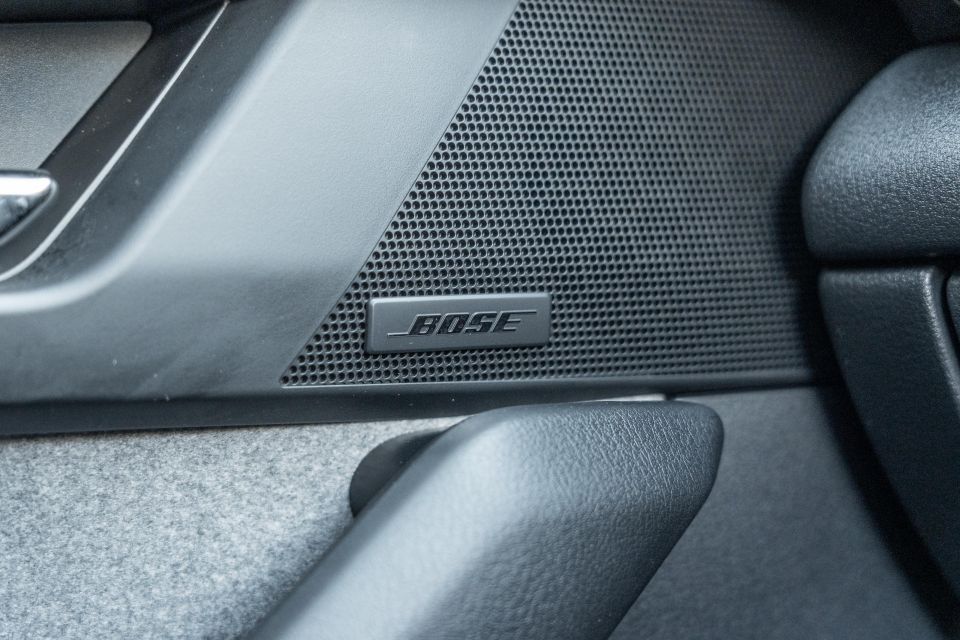
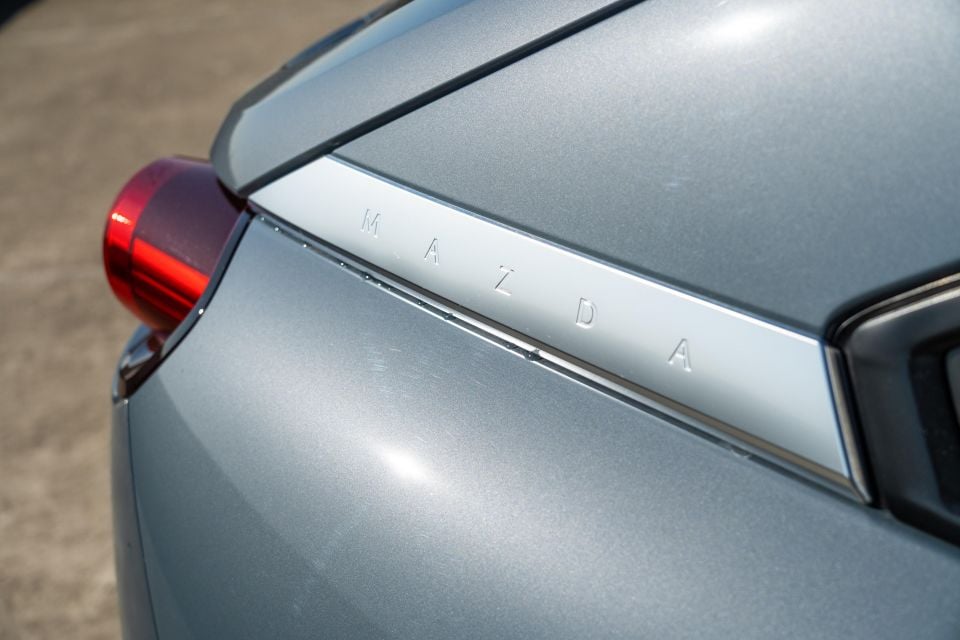
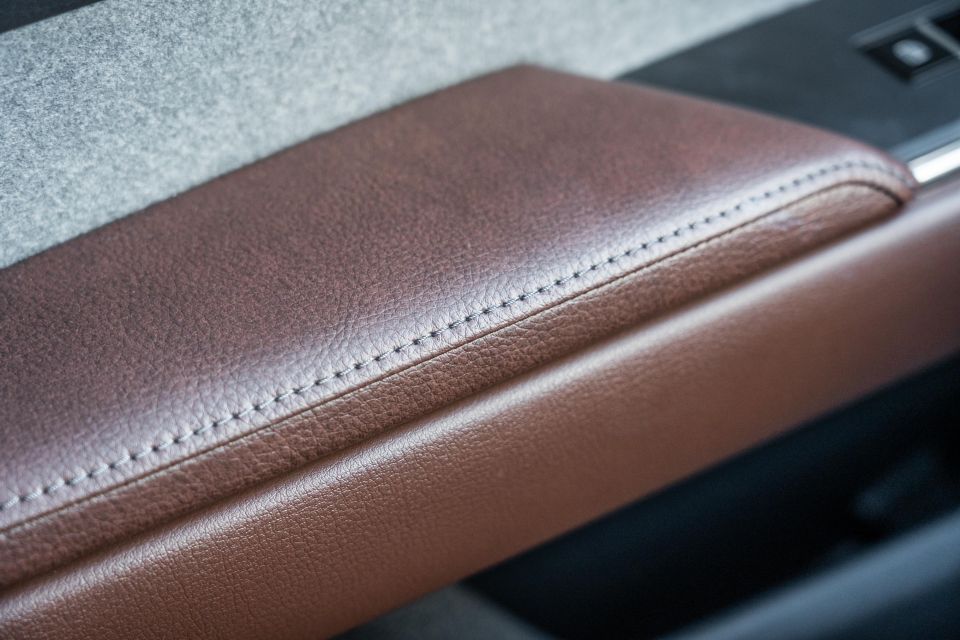
That’s in addition to features found lower in the range:
The features list is essentially identical to that of a CX-30 Astina.
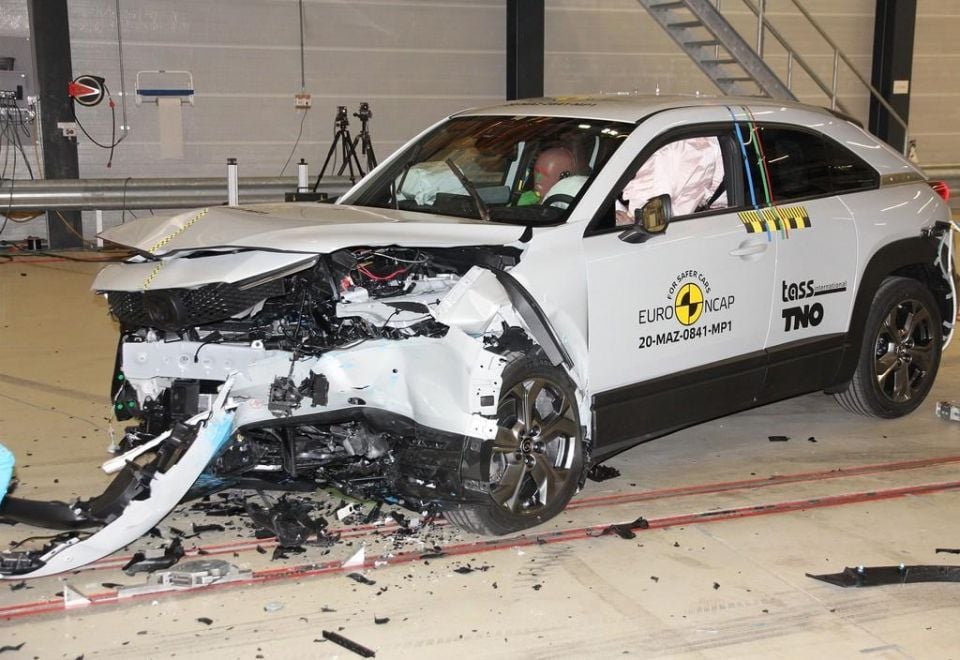
The MX-30 wears a five-star ANCAP safety rating based on testing conducted by Euro NCAP in 2020.
It scored 91 per cent for adult occupant protection, 87 per cent for child occupant protection, 68 per cent for vulnerable road user protection, and 74 per cent for safety assist.
Standard safety features include:
MX-30 G20e Astina adds:
You can get these additional features on lesser MX-30s by opting for the $1500 Vision Technology package.

The MX-30 is backed by a five-year, unlimited-kilometre warranty, with five years of capped-price servicing.
Intervals are 12 months or 10,000km – shorter than many rivals – and the first five visits are capped at $328, $374, $328, $374 and $328, or $1732 all up.
A C-HR Hybrid’s first five services are capped at $220 each, with longer intervals of 12 months or 15,000km. Servicing a hybrid HR-V is cheaper still at $125 each, albeit with 12-month/10,000km intervals.
While we wouldn’t call the MX-30’s service pricing expensive, it’s not best-in-class either.
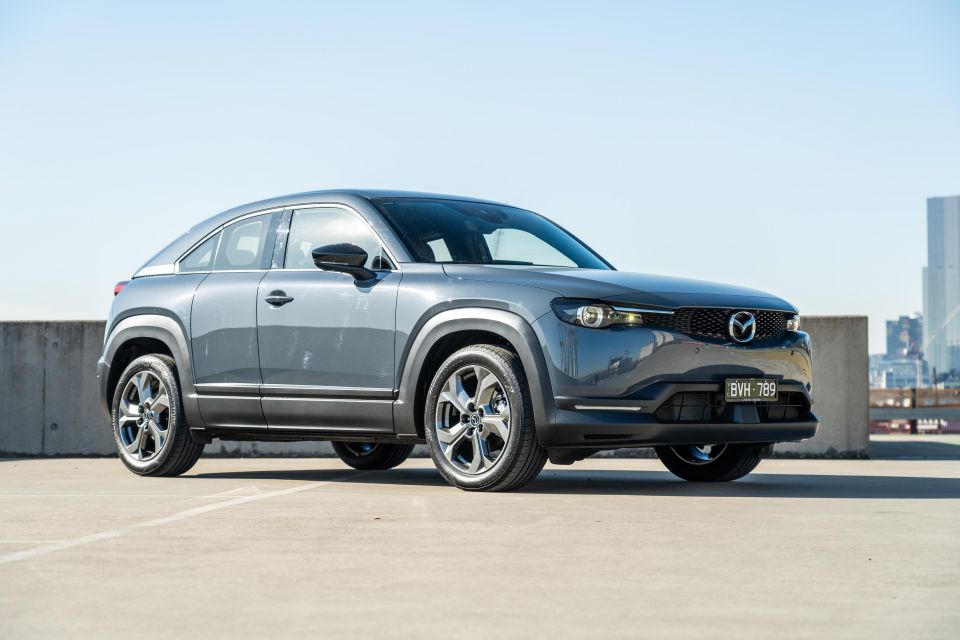
The MX-30 G20e Astina is best thought of as a CX-30 with shapelier styling for a modest premium. Framed any other way, it disappoints.
The ‘M Hybrid’ marketing is misguided, particularly because people do fall for it as hybrid popularity grows in these days of higher petrol prices.
I had someone ask me about the MX-30 specifically because of the hybrid appellation, and had to tell them a HR-V or C-HR hybrid is a vastly better choice if low fuel bills are your priority.
If you’re looking for something fun to drive and only need occasional-use rear seats, there’s the Ford Puma, while a Renault Captur or Volkswagen T-Roc offers a more flexible turbocharged powertrain, and a Mazda CX-30 is more affordable.
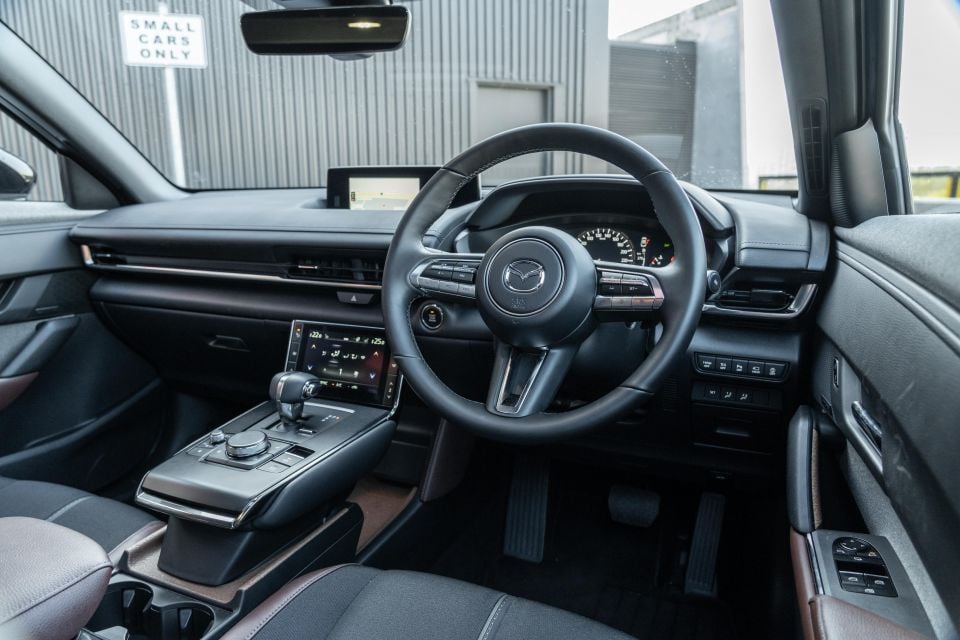
As is often the case with coupes, it comes back to the styling. You’d have to really love its chunky looks and funky doors to put up with the (admittedly modest) price premium and significant reduction in practicality.
Sure, it’s more practical than a two-door coupe would be, but are the hotter-than-CX-30 looks worth having to step out of the car every time you want to let someone into the back seat?
It makes one wonder why Mazda didn’t just give the MX-30 four proper doors, given it already doesn’t look dramatically different inside and out from a CX-30. But then that’s not the only perplexing thing about this MX-30.
By making this look exactly like an electric MX-30, Mazda seems to be inviting the idea this is some efficient, thoroughly modern electrified crossover.
We know Mazda is capable of developing such a vehicle – see the upcoming plug-in hybrid CX-60 – but this peculiarly marketed crossover misses the mark, and confounds more than it delights.

Click the images for the full gallery
MORE: Everything Mazda MX-30
Where expert car reviews meet expert car buying – CarExpert gives you trusted advice, personalised service and real savings on your next new car.
William Stopford is an automotive journalist with a passion for mainstream cars, automotive history and overseas auto markets.


Max Davies
3 Hours Ago
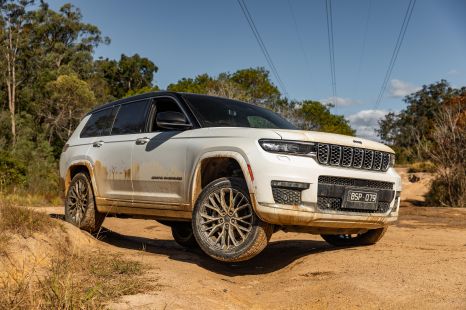

William Stopford
19 Hours Ago
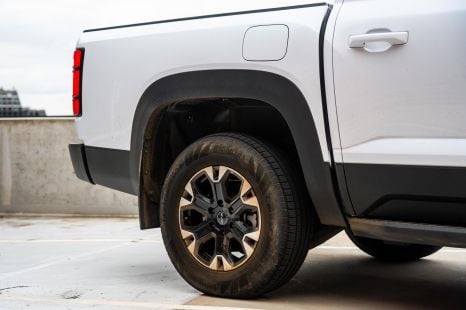

Ben Zachariah
20 Hours Ago
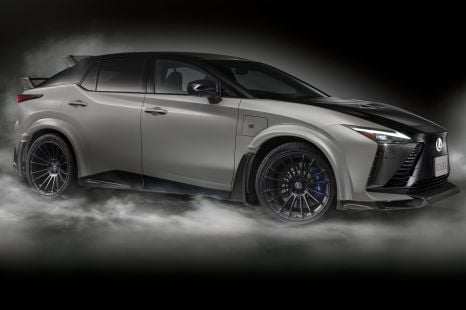

Derek Fung
21 Hours Ago
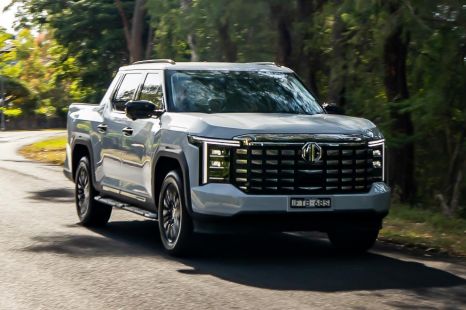

Matt Campbell
1 Day Ago
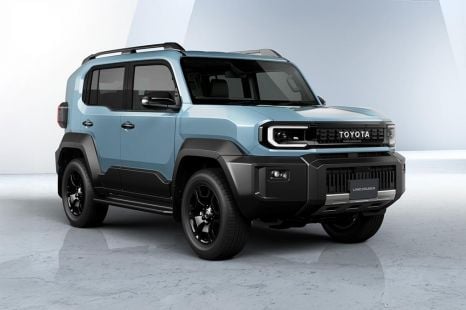

William Stopford
2 Days Ago